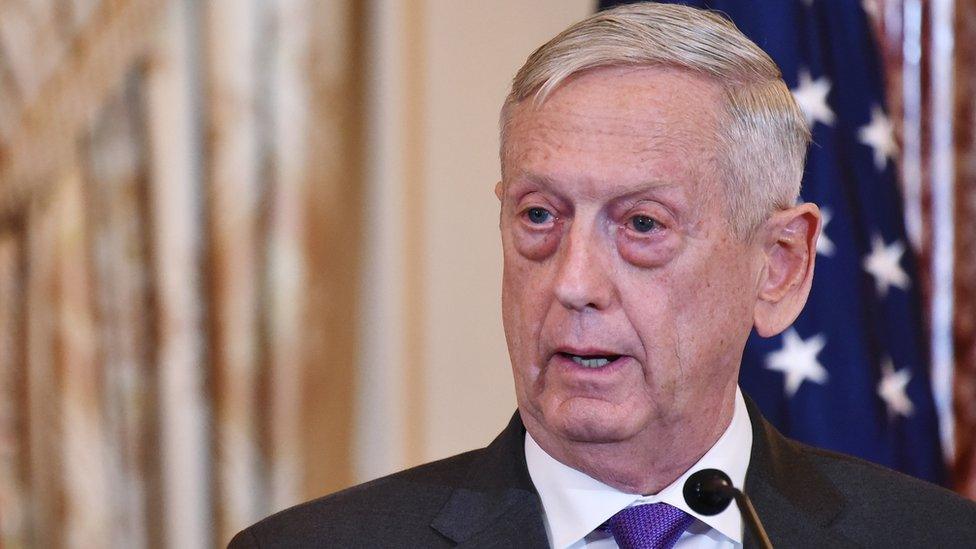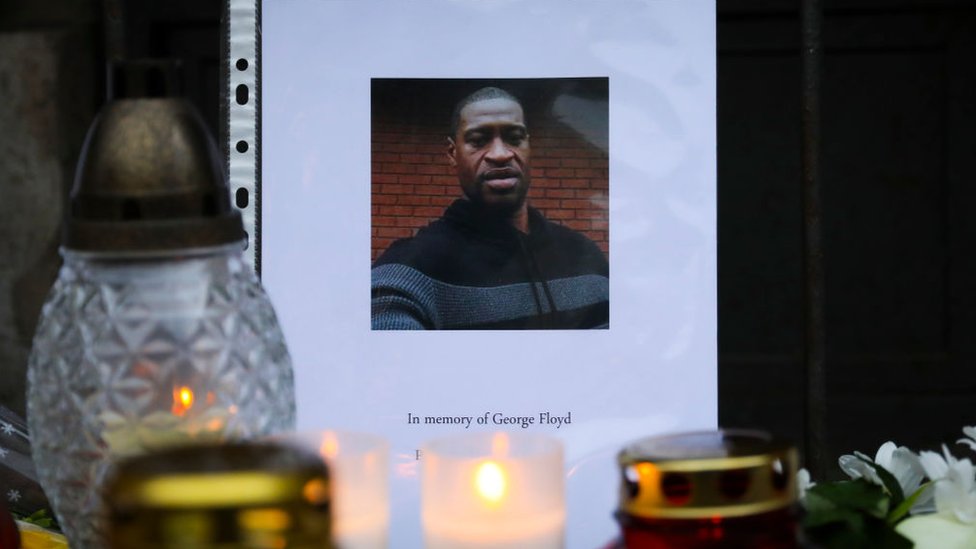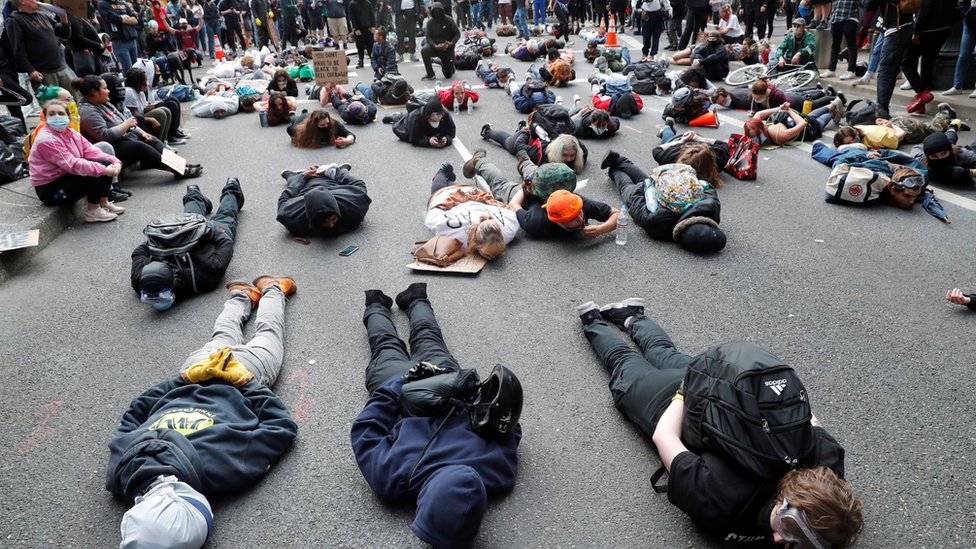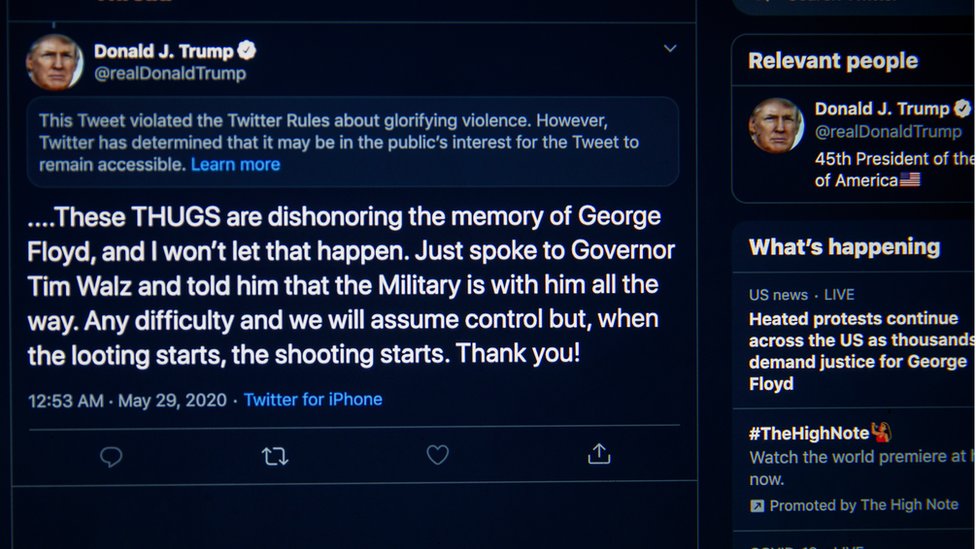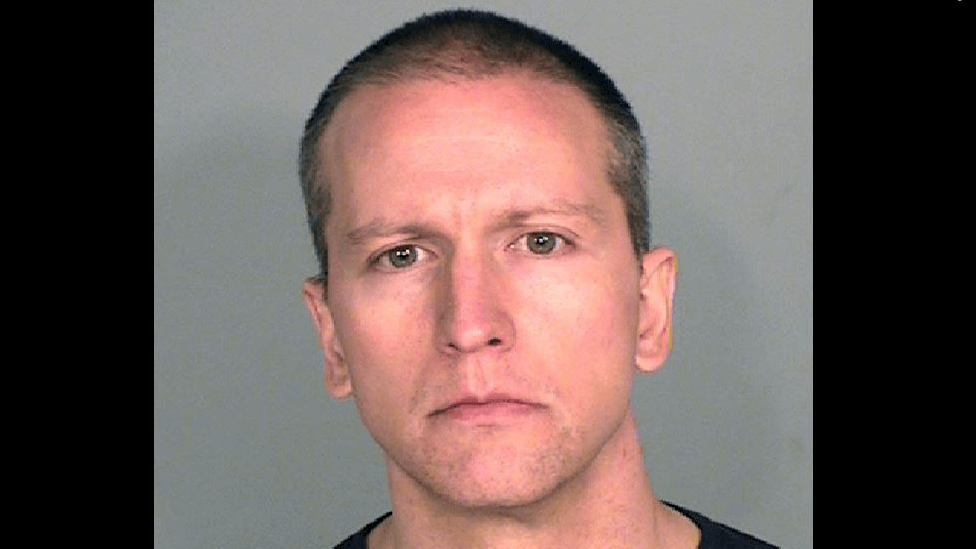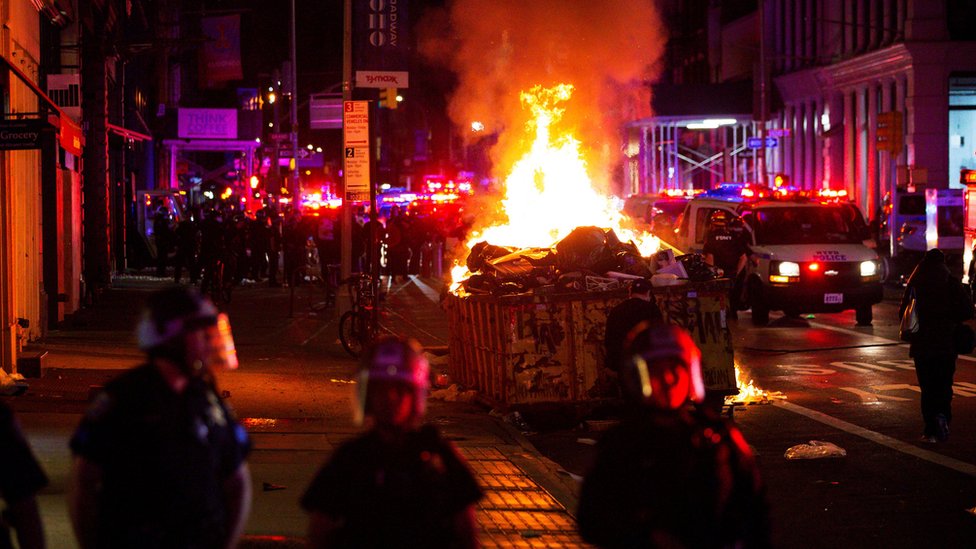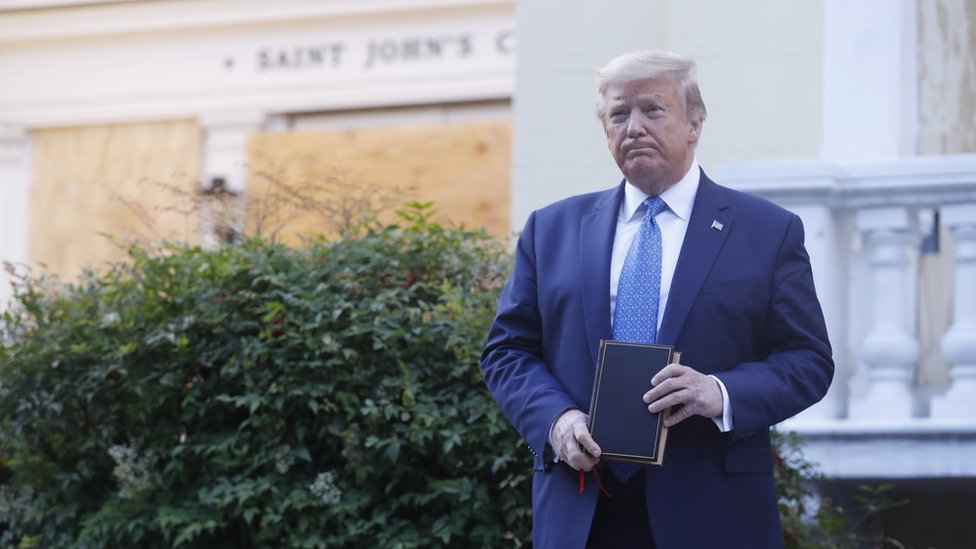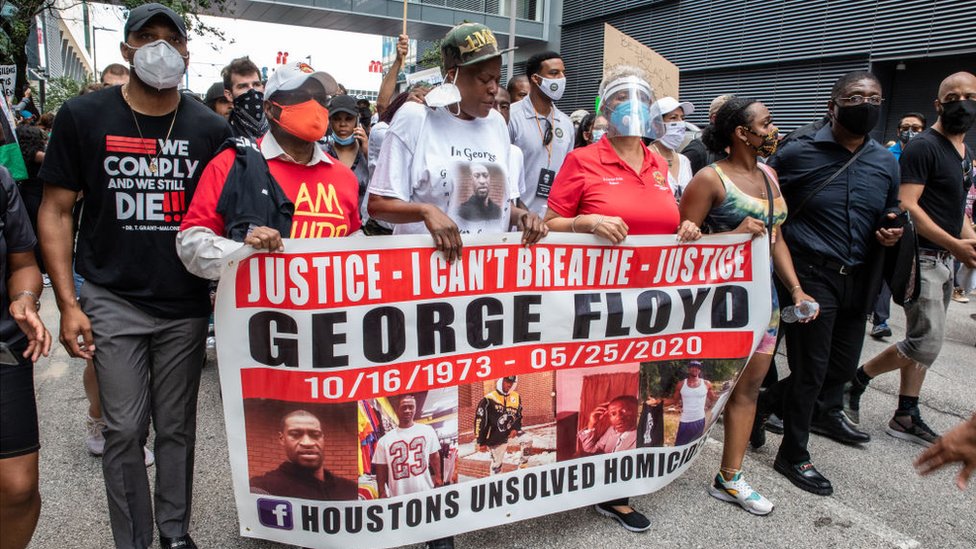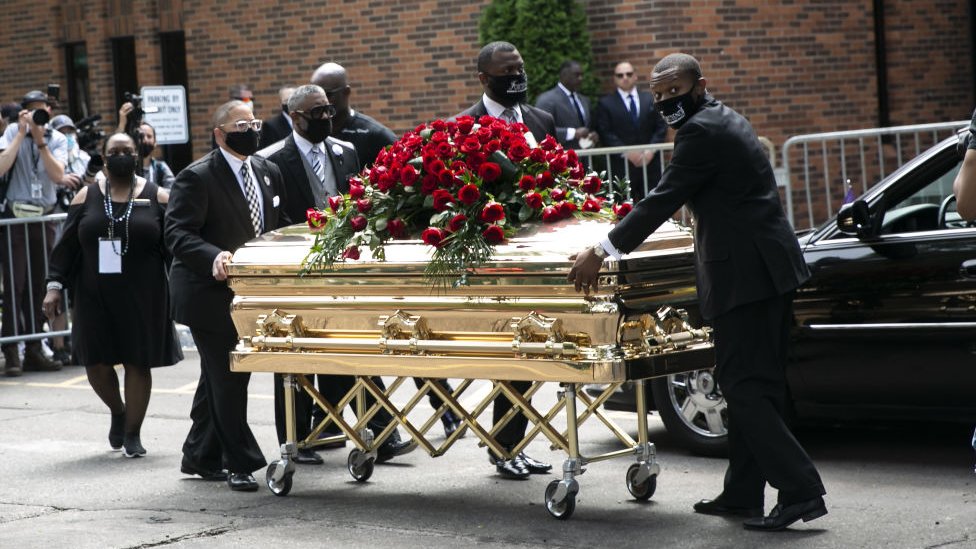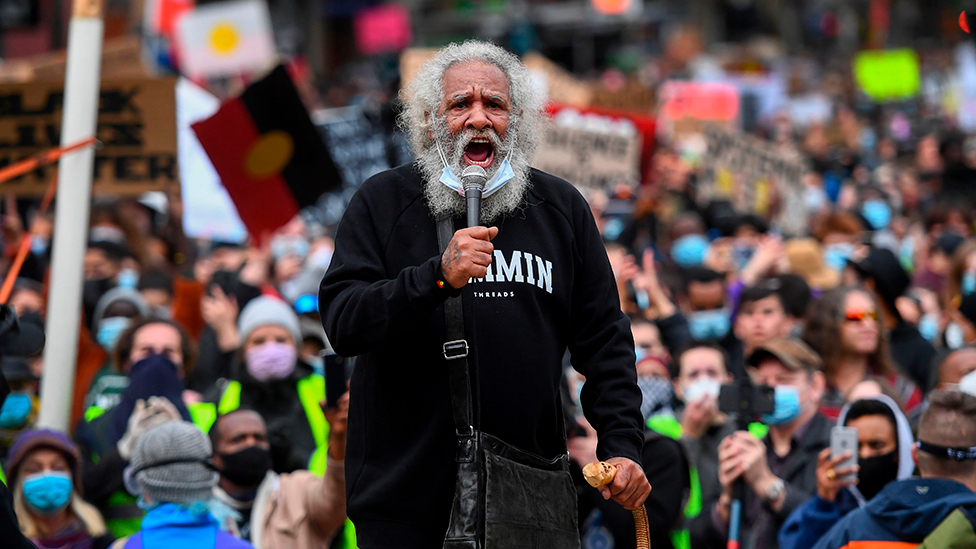George Floyd death: Trump ex-defence chief Mattis attacks president
- Published
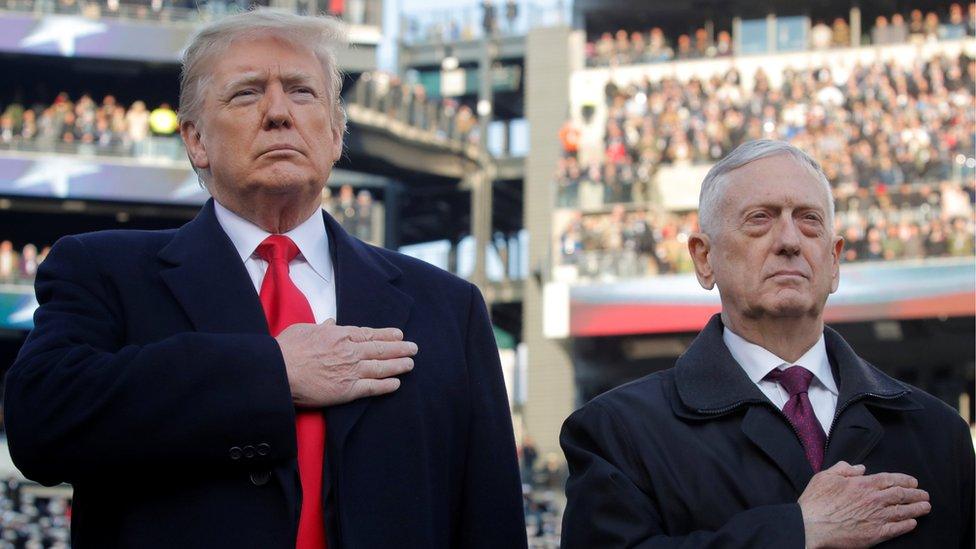
James Mattis was President Donald Trump's first defence secretary - but resigned in 2018
Ex-US Defence Secretary James Mattis has denounced President Donald Trump, saying he deliberately stokes division.
He said he was "angry and appalled" by Mr Trump's handling of ongoing protests over the death of African American George Floyd at the hands of police.
Mr Mattis berated Mr Trump's "abuse of authority" - and backed protesters seeking to uphold American values, as did ex-President Barack Obama.
Mr Trump has described Mr Mattis repeatedly as an "overrated general".
Mr Mattis quit in 2018 after Mr Trump decided to pull US troops out of Syria.
He has remained mostly silent since then, until his rebuke of the Trump administration was published in The Atlantic magazine, external on Wednesday.

More on George Floyd's death
VIEWPOINT: Tipping point for racially-divided nation
TIMELINE: Recent black deaths at hands of police
CRIME AND JUSTICE: How are African-Americans treated?
HOW IT HAPPENED: The last moments of his life

In response to the fresh criticism, Mr Trump posted a series of tweets in which he claimed to have fired Mr Mattis.
"I didn't like his "leadership" style or much else about him, and many others agree," he wrote. "Glad he is gone!"
Allow X content?
This article contains content provided by X. We ask for your permission before anything is loaded, as they may be using cookies and other technologies. You may want to read X’s cookie policy, external and privacy policy, external before accepting. To view this content choose ‘accept and continue’.
The row comes as new charges were brought against all of the sacked police officers present at Mr Floyd's death in the city of Minneapolis.
The charge against Derek Chauvin has been elevated to second-degree murder while the other three officers, previously uncharged, face counts of aiding and abetting murder.
The death has sparked huge protests across the US in recent days.
The vast majority of demonstrations over the past nine days have been peaceful, but some have turned violent and curfews have been imposed in a number of cities.
What did Mattis say?
"Donald Trump is the first president in my lifetime who does not try to unite the American people - does not even pretend to try," Mr Mattis wrote in The Atlantic. "Instead, he tries to divide us."
He continued: "We are witnessing the consequences of three years of this deliberate effort. We are witnessing the consequences of three years without mature leadership."
Mr Mattis also addressed the recent wave of anti-racism protests.
White House compares Trump to Churchill in WW2
"We must not be distracted by a small number of lawbreakers," Mr Mattis wrote. "The protests are defined by tens of thousands of people of conscience who are insisting that we live up to our values... as a nation."
The retired general - whose resignation letter in December 2018 was full of implied criticism of the president's foreign policy - also condemned the use of the military in response to the protests.
"Never did I dream that troops... would be ordered under any circumstance to violate the Constitutional rights of their fellow citizens," he said.
"Militarising our response, as we witnessed in Washington DC, sets up a conflict... between the military and civilian society," he added.
Mr Mattis was referring to an incident earlier this week when peaceful protesters were dispersed with tear gas and rubber bullets from a park close to the White House.
Mr Trump then crossed the park for a photo-op at a historic church that had been damaged by fire in the unrest.
This provoked sharp criticism from top Democrats and religious leaders, who accused the president of aggressively targeting the demonstrators for the purpose of posing for photographs.
In his latest comments, Mr Mattis derided the "bizarre photo-op" and said clearing the park of demonstrators beforehand was an "abuse of executive authority".
Mr Trump has repeatedly questioned whether the protesters were peaceful and, in an earlier tweet, he said "people liked my walk to this historic place of worship".
And in an interview with his former press secretary Sean Spicer on Wednesday, the president once again defended the church visit. He said it was "handled really well" and "religious leaders loved it".
What was Mr Obama's reaction to the protests?
Mr Obama sees limitless potential in the faces of his fellow African Americans
Former President Barack Obama said it was vital to channel the momentum built up in the recent protests to bring about change.
In his first video comments since Mr Floyd's death, he said the demonstrations were as profound as anything he'd seen in his lifetime, and called on Americans to seize the chance to deal with the underlying problems in society.
"Too often some of that violence has come from folks who were supposed to be serving and protecting you," Mr Obama said.
"I want you to know that you matter. I want you to know that your lives matter, your dreams matter."
"There is a change in mindset that's taking place, a greater recognition that we can do better," he added.
Mr Obama did not comment directly on Mr Trump's handling of the unrest, although he urged mayors around the country to review their use-of-force policies.
George Floyd's ex partner: 'Gianna doesn't have a father'
Meghan Markle, the Duchess of Sussex, has also issued a personal message about Mr Floyd's death, saying his life mattered and recent events had been devastating.
Protests over the death continued in dozens of cities on Wednesday night despite widespread curfews.
They have been largely peaceful, with cities such as Los Angeles and Chicago relaxing their restrictions amid hopes that the worst of the violence had passed.
A post-mortem examination has revealed that Floyd had the coronavirus in early April. But officials stressed that this played no role in his death.
- Published2 June 2020
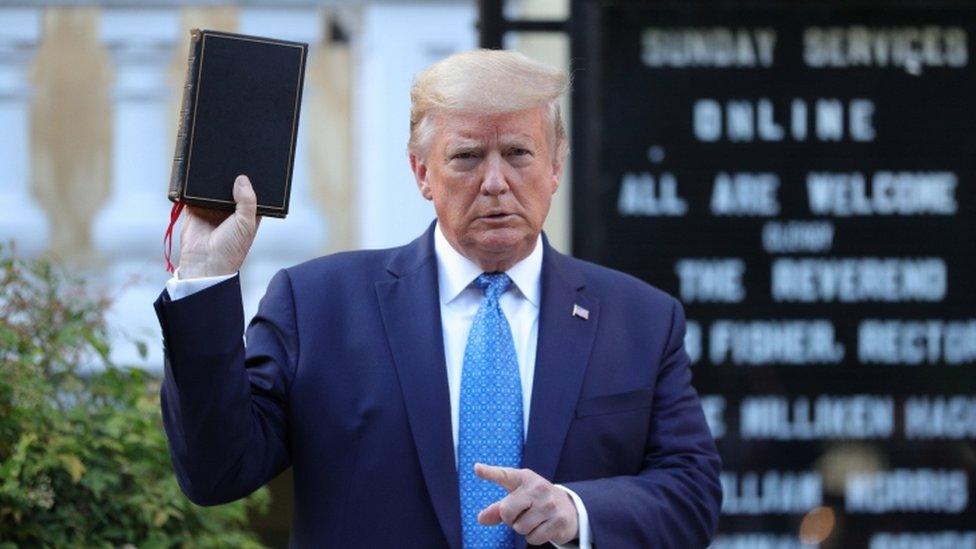
- Published23 December 2018

- Published21 December 2018
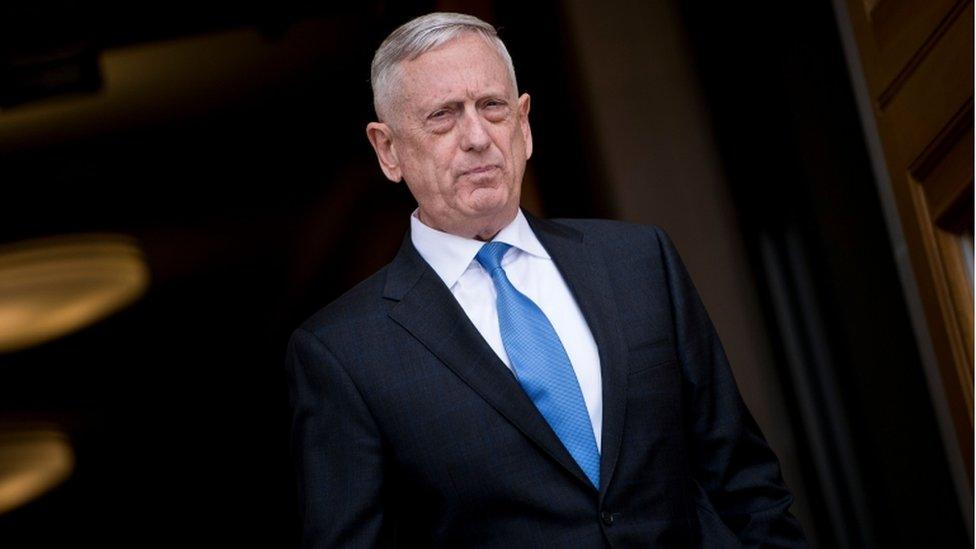
- Published21 December 2018
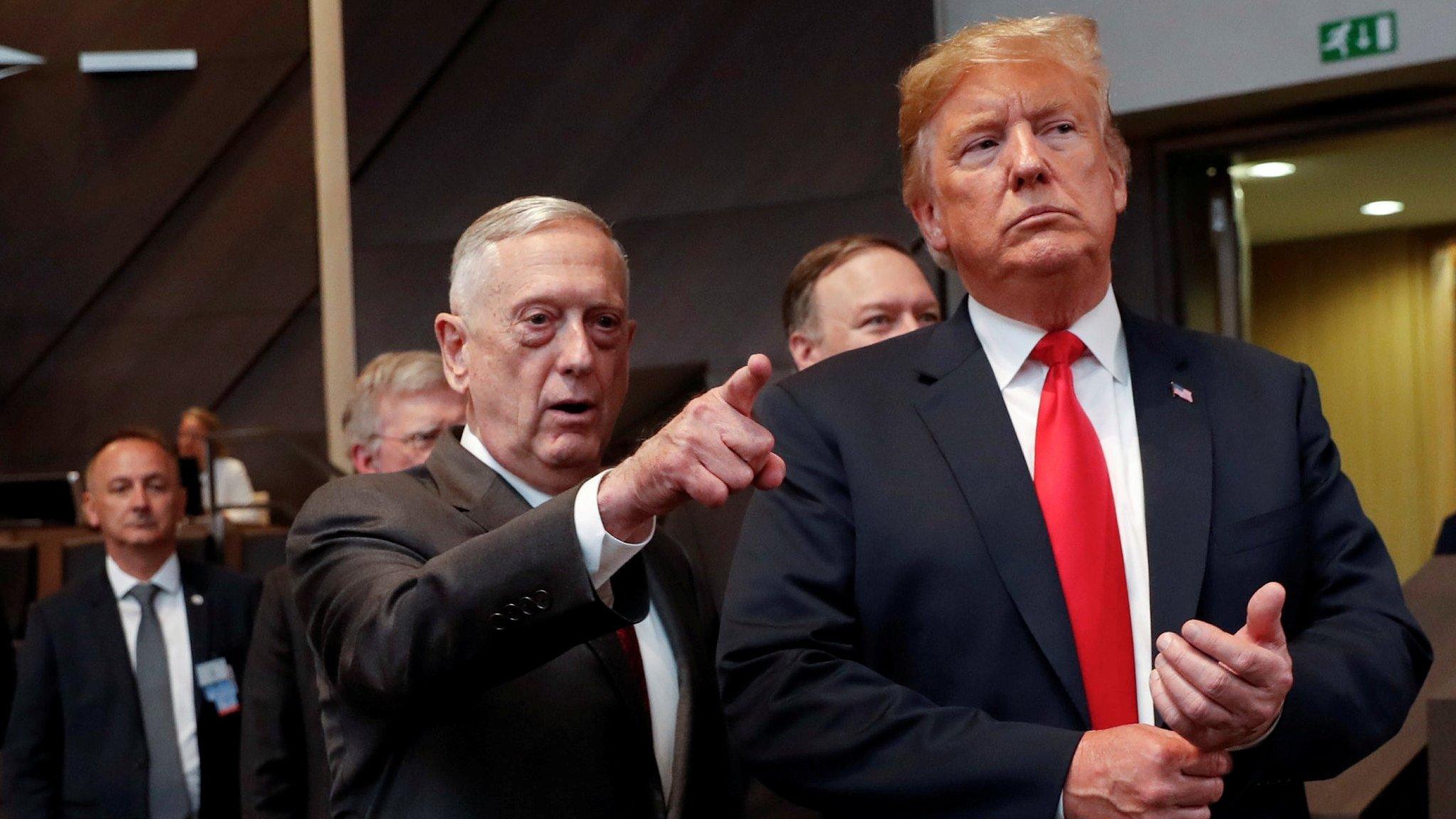
- Published21 December 2018
